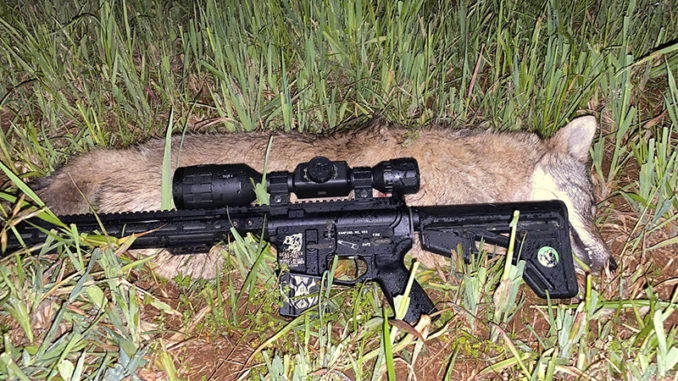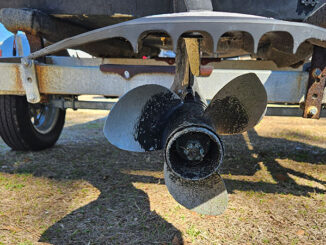
Coyote hunter’s greatest adversary is high-growth fields
Hunting fields with high growth can be challenging, but it’s definitely not impossible. Hunters that keep a few tips in mind can have plenty of success killing these animals no matter how badly overgrown the fields are.
High fields are buffets for coyotes
Spring has sprung and with this comes the fastest growth of the year. Fields explode with growth as the temperatures rise and leaves fill the woods making seeing any distance in the woods at night with night vision or thermal equipment almost impossible. This growth however brings much protection for the young of the year. Coyotes head to the overgrown fields to find these hiding spots and hunt for their prey.
Crickets, grasshoppers, birds, mice and young fawns hide in over grown fields this time of year and this brings coyotes from miles around to feast. Following are some great tactics to take advantage of this cover and score harvests during the toughest time of the year to bag a coyote.
Calling to high field coyotes
April through June is the toughest time of year to call to coyotes as females protect the location of their dens by not answering to coyote vocals. When you do get a response to coyote vocals be sure to move in closer before calling with prey distress as coyotes pick a feeding area and are easily distracted by the amount of prey they kick out when they travel any great distance.
A coyote will not travel far to a call due to the sheer volume of available food between the call and the coyote.Your best bet is to move in closer, very close before trying to call the coyote into range. Be very wary of the noise you create walking through heavy growth. Set up your caller and use low volume prey distress at first.
Vole squeaks and mice sounds work best. Level up to bird distress if needed. Fawn distress can be used last to reach out if need be. The coyote has a huge advantage with the vegetation and will often be on you before you know it.
Where to set up
High vantage points are a must when hunting high field coyotes. A thermal scanner helps you locate coyotes long before they are within range. They will also help you locate the silent coyotes in a field that do not want to travel great distances from their feeding area. Scan often as the high growth will often block your view. You will occasionally catch a glimpse of an approaching or feeding coyote and begin to make a plan. Seeing the coyote becomes the most critical part this time of year. Elevation and technology give you an upper-hand.
Seal the deal
Moving in close before going to prey distress is the key after locating a target coyote. Always check the wind direction and make a move towards a located coyote. Scan as you walk into your set-up and watch for the telltale sign of a jumping feeding coyote. I often catch coyotes jumping for grasshoppers and giving away their position as they gorge on insects in the field.
Coyotes will find it hard to pass up an easy meal when you turn on your bird or mouse sounds but you must be close as you can get. Coyote feeding territories and used nightly as well as yearly by different coyotes. Return to areas where you have seen coyotes feed in the past and you will be sure to locate more. Check really close to roads and buildings at tis time as the high growth provides excellent cover and coyotes will venture closer to danger under the cover of vegetation.
The coyote hunter’s best days are fresh cut fields with farm machinery spreading fresh rodent carcasses across a large area. But with the right approach, a hunter can take advantage of the heavy growth to get in nice and close.
For more predator hunting tips, check out Gene Wisnewski’s YouTube channel.




Be the first to comment